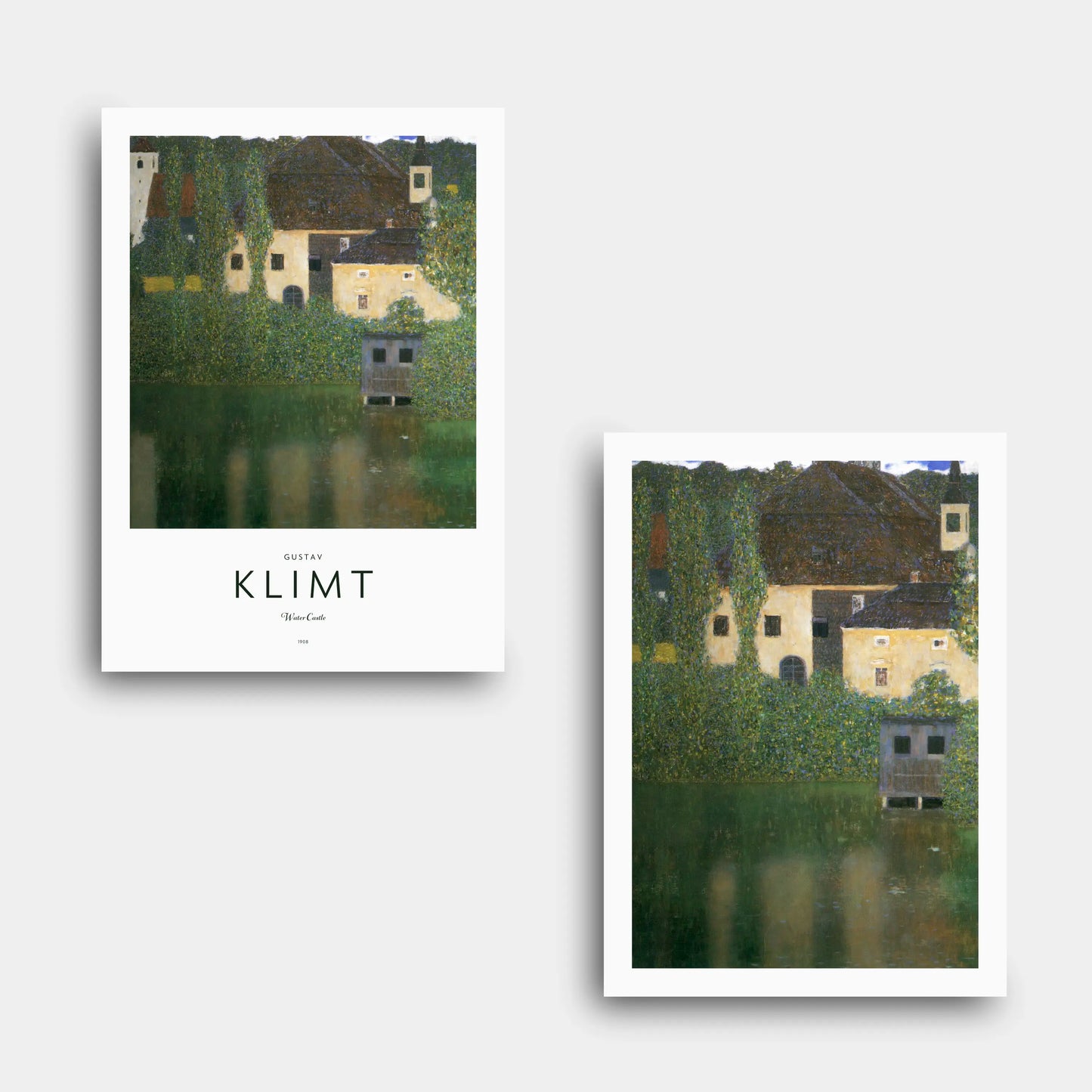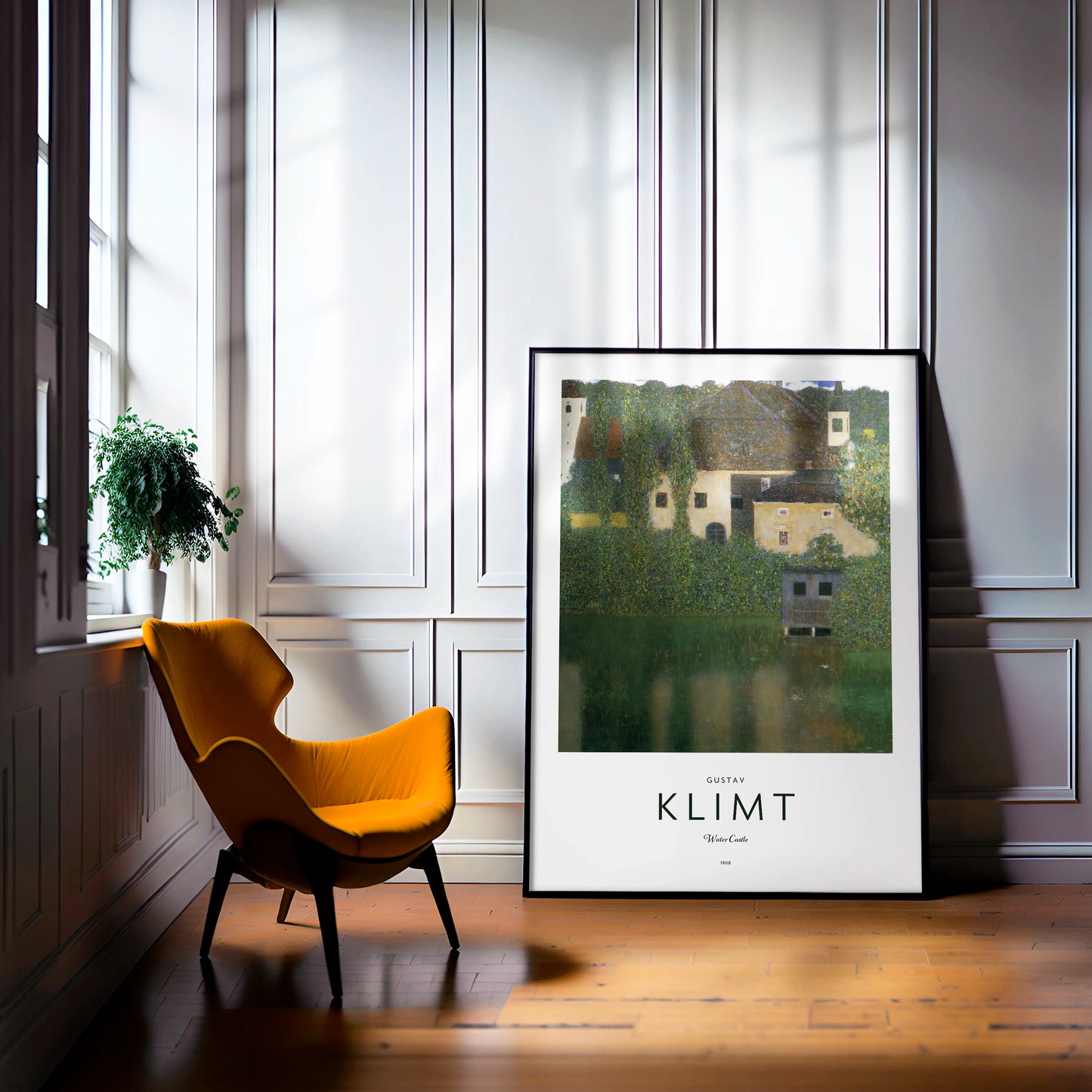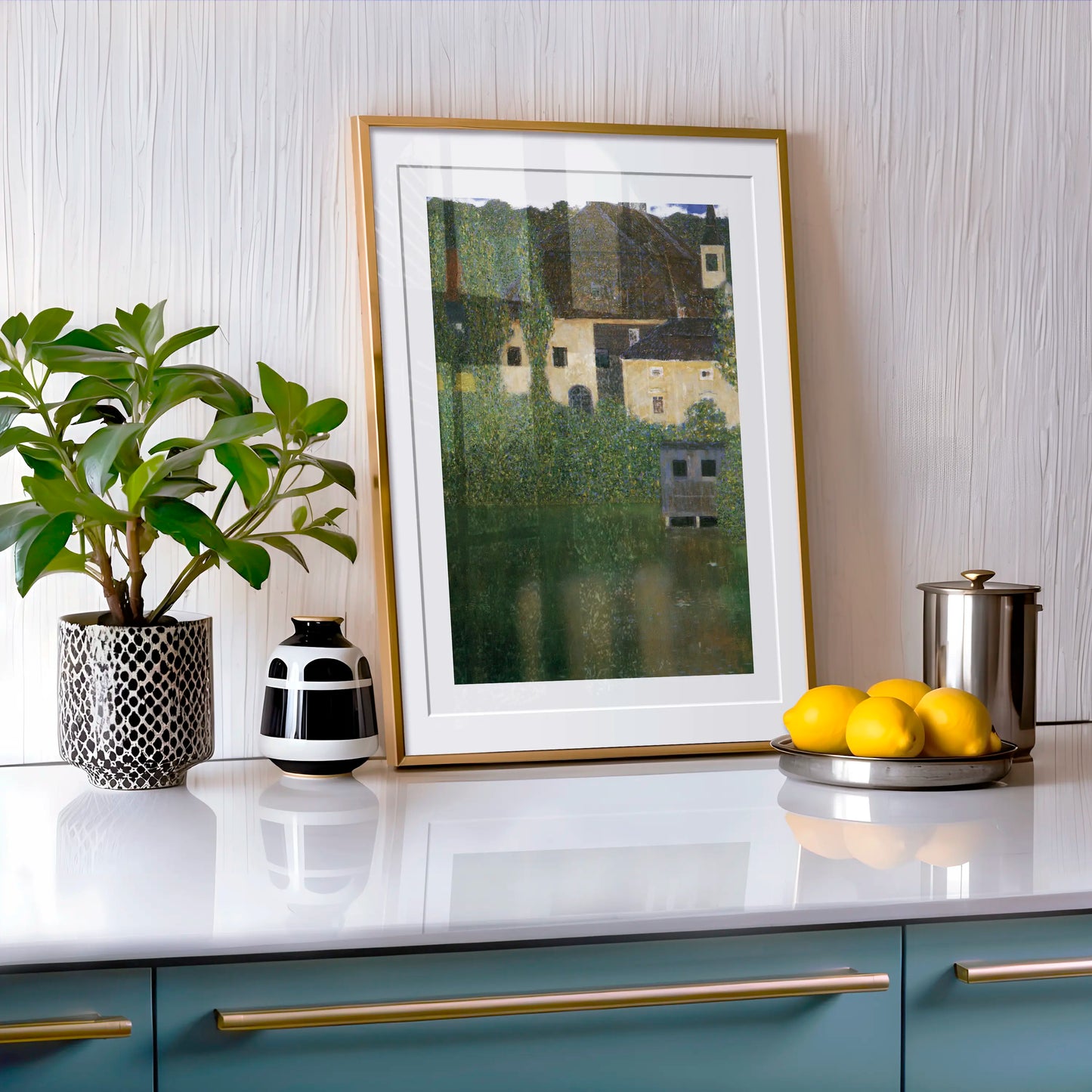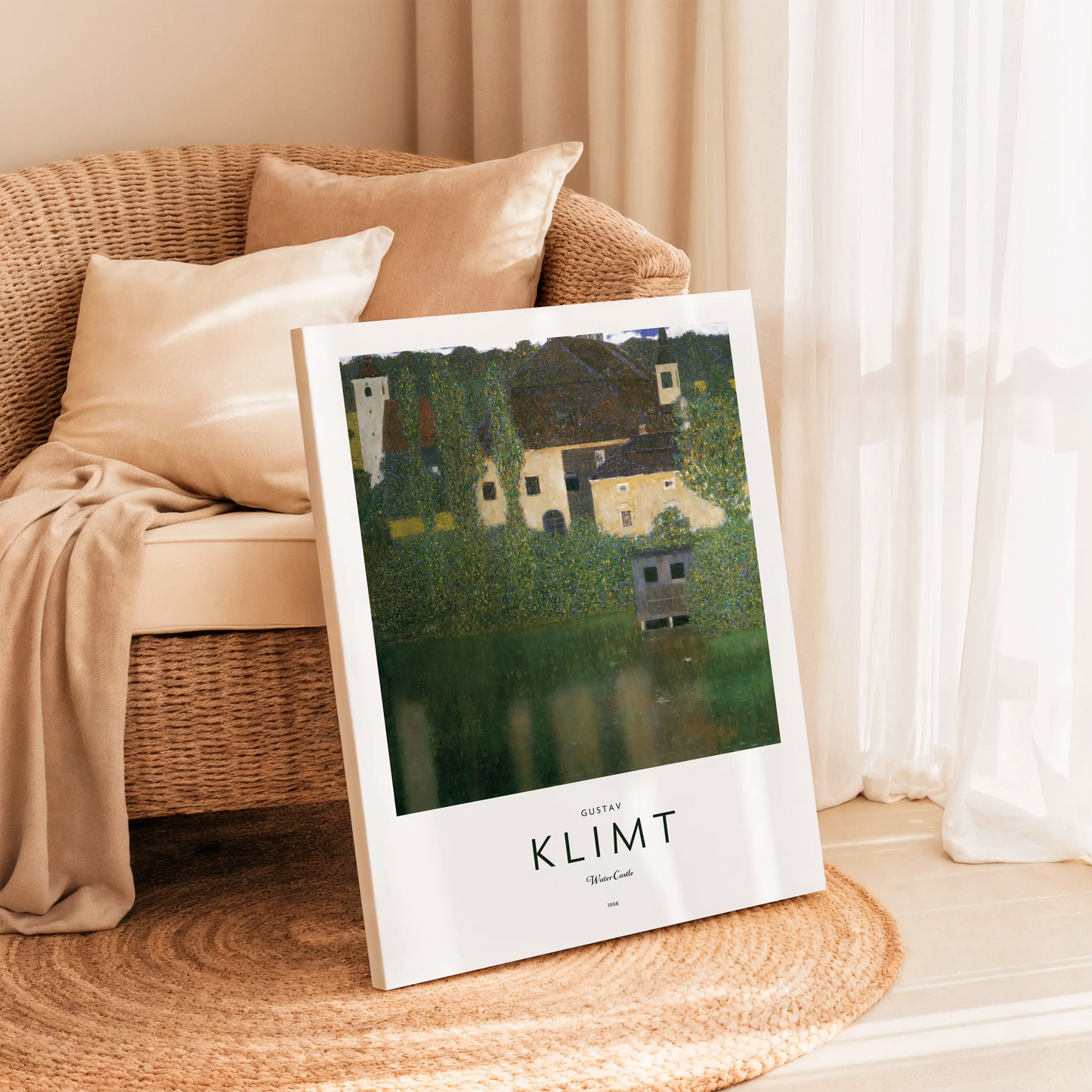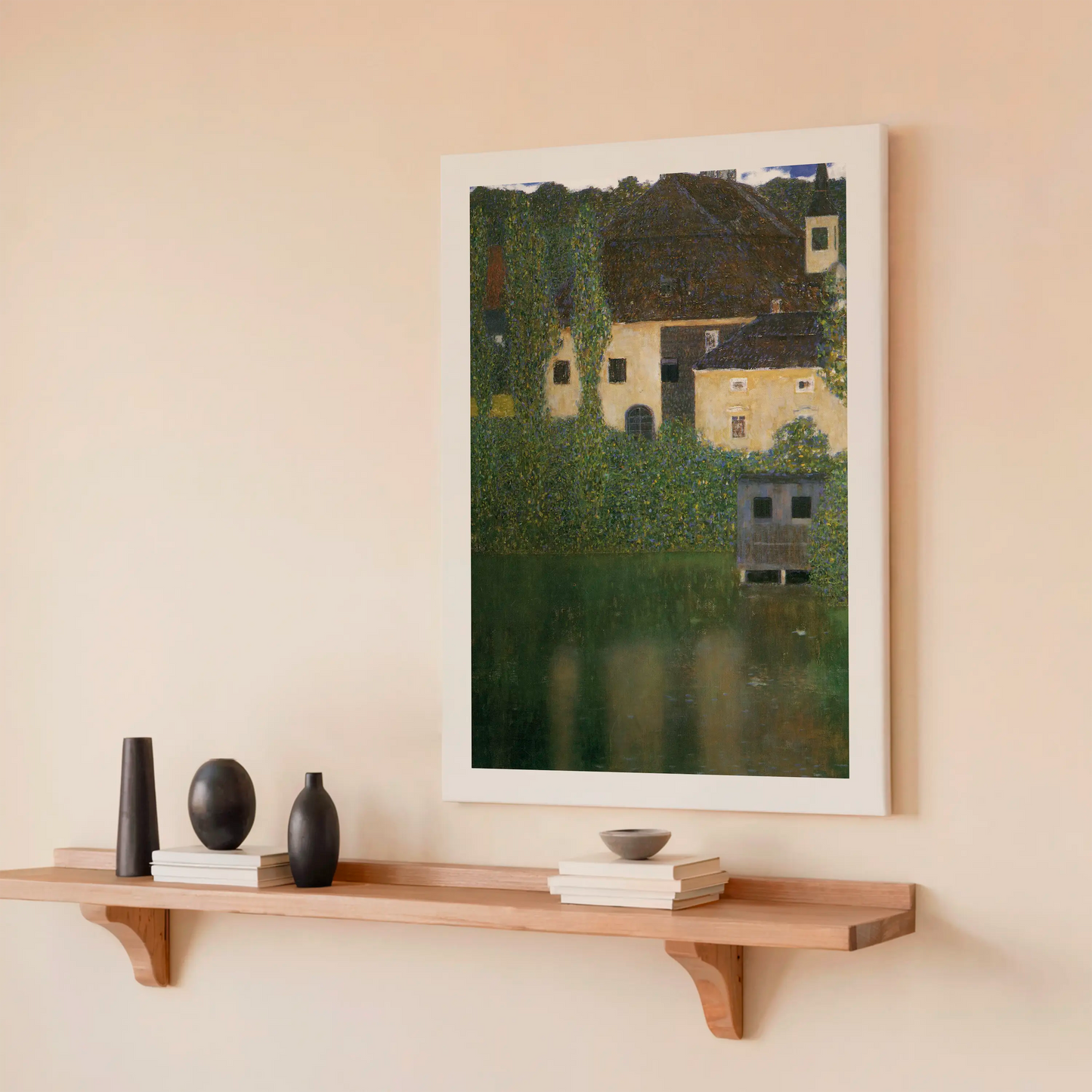Gustav Klimt - Water Castle (1908) - Digital File N180
Gustav Klimt - Water Castle (1908) - Digital File N180
Couldn't load pickup availability
Share
Paper Poster | Canvas Print | Digital File
1. Historical and Artistic Context
Painted in 1908, Gustav Klimt’s “Water Castle (Schloss Kammer on the Attersee)” belongs to a pivotal moment in his career. At this time, Klimt was transitioning from his famous “Golden Phase” to a more painterly and naturalistic style. The Vienna Secession, which he had helped to found a decade earlier, was reaching maturity, and Klimt himself was celebrated as one of the leading figures of European modernism. The painting was created during his summer retreat at Lake Attersee, where he spent many seasons accompanied by his companion Emilie Flöge. These lakeside summers provided him with a chance to escape the cultural and political tensions of Vienna, and his landscape paintings from this period represent a more personal and contemplative side of his art.
2. Technical and Stylistic Analysis
The painting presents a direct view of the historic Schloss Kammer, framed by dense foliage and reflected in the waters of Lake Attersee. Klimt adopts a nearly square format, a compositional choice he favored, which flattens the perspective and creates a decorative balance. The color palette is subdued, dominated by greens, yellows, and soft ochres. Unlike his ornate portraits, this work avoids excessive decoration, instead capturing natural harmony through tonal variations. The vertical lines of trees intersect the block-like forms of the castle, producing a sense of rhythm and order. Reflections in the water add another dimension, reinforcing the symmetry and giving the composition a poetic calmness.
3. Symbolism and Interpretation
While “Water Castle” does not present overt allegorical symbols, it carries implicit meanings. The juxtaposition of nature and architecture suggests harmony between man-made and organic forms. The castle, partly hidden by foliage, seems to grow out of the land, symbolizing continuity between culture and nature. The mirrored surface of the water may be interpreted as a metaphor for reflection, memory, or the passage of time. Many scholars highlight the mood of serenity, suggesting the work reflects Klimt’s desire for peace and retreat from urban life. Rather than offering a direct narrative, the painting invites the viewer to contemplate balance, stillness, and the timeless beauty of landscape.
4. Technique and Materials
Klimt painted this work in oil on canvas, working directly outdoors during his summer holiday. Known for painting without preparatory sketches, he applied colors freely, layering impasto strokes that created depth and tactile texture. He used binoculars and viewfinders to frame distant compositions, an approach that flattened perspective and emphasized surface design. The water is depicted with countless short strokes and subtle color shifts, while the castle’s walls are more solidly painted. Unlike his earlier golden works, this landscape includes no metallic leaf or precious materials, relying instead on natural pigments. The result is a balance between realism and abstraction, where detail and decorative flatness coexist.
5. Cultural Impact
Though less widely known than “The Kiss,” Klimt’s landscapes, including “Water Castle,” have gained recognition as essential to his oeuvre. They influenced younger Viennese artists such as Egon Schiele and helped redefine modern landscape painting. The flattened, decorative treatment of natural scenes anticipated elements of later abstraction and design movements. In popular culture, these works symbolize the meditative side of Klimt’s artistry, distinct from the sensual portraits of women for which he is most famous. Today, “Water Castle” is regarded as one of his finest landscapes, embodying the synthesis of modernist experimentation and lyrical naturalism.
6. Critical Reception and Scholarly Interpretations
When exhibited in 1909, “Water Castle” was praised as a standout work. Critics admired its innovative composition and atmospheric qualities, describing it as one of the most brilliant paintings of Klimt’s career. Scholars since then have emphasized its role in bridging decorative symbolism and plein-air observation. The lack of human figures is often interpreted as a deliberate choice, shifting focus entirely to nature and architecture. Art historians view the work as evidence of Klimt’s openness to French Impressionist and Post-Impressionist influences while maintaining his unique Viennese decorative sensibility. Overall, it is celebrated for its subtlety, balance, and contemplative aura.
7. Museum, Provenance and Exhibition History
“Water Castle” entered the collection of the National Gallery in Prague in 1910, purchased from an exhibition in the Rudolfinum. Since then, it has remained in public ownership and is a highlight of the museum’s modern art collection. The painting has been featured in major Klimt retrospectives and exhibitions on Viennese modernism, traveling internationally to institutions that celebrate fin-de-siècle art. Its provenance is stable and without dispute, unlike some of Klimt’s portraits that became subjects of restitution claims. Today, the work is often displayed in Prague and has been loaned for exhibitions that focus on Klimt’s landscapes.
8. Interesting Facts
1. Klimt painted the castle from across the lake, using binoculars to frame the view.
2. The canvas is nearly square, echoing the proportions of early photography.
3. It was the first of several views of Schloss Kammer he painted between 1908 and 1910.
4. No human figures appear, making nature the sole protagonist.
5. Locals nicknamed Klimt “the forest demon” for his eccentric painting habits at Attersee.
6. The reflection of the castle is treated with almost pointillist brushwork.
7. Unlike his portraits, no gold leaf is used in this landscape.
8. Critics at the 1909 Kunstschau called it one of the most brilliant works of the exhibition.
9. The painting was acquired by the Prague gallery for 500 crowns in 1910.
10. Klimt often painted from a boat on the lake, which gave him unique perspectives.
9. Conclusion
“Water Castle” exemplifies Gustav Klimt’s late style and his deep engagement with the Austrian landscape. It reflects his ability to combine decorative flatness with atmospheric depth, producing a work that is both modernist and timeless. The painting’s balance of natural serenity and architectural solidity creates a mood of reflection and calm. Within Klimt’s body of work, it holds a vital place, showing that his genius extended beyond portraiture into landscapes that anticipated future artistic developments. Today, the canvas continues to inspire admiration as one of Klimt’s most meditative and refined achievements.
